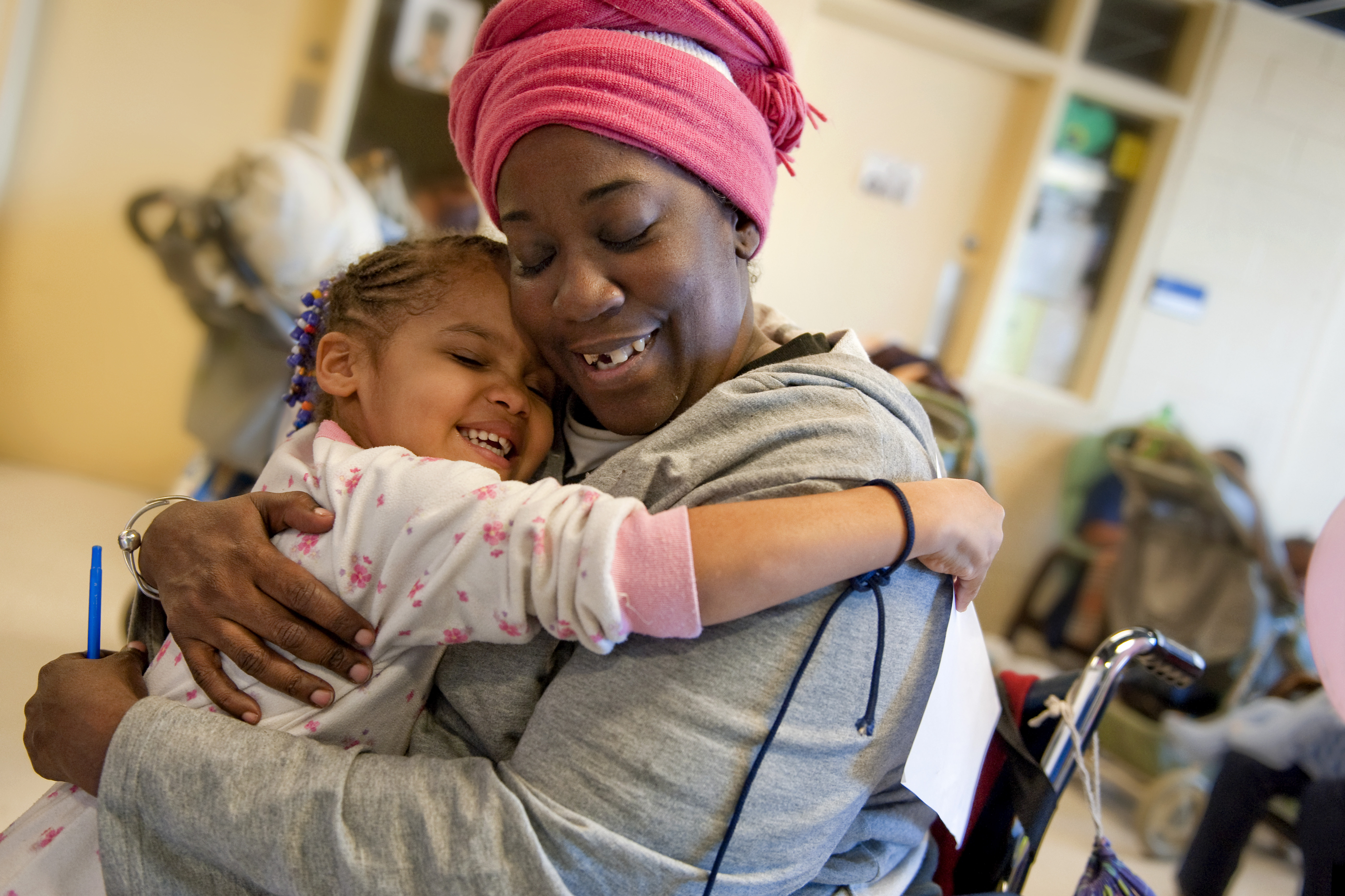The Problem
A child is removed from their home and placed into foster care every two minutes. Neglect, often a proxy for the consequences of poverty, is the most common driver of child welfare involvement and, too often, families are broken apart for reasons that could have been prevented if they were supported to overcome poverty, mental illness, and substance use. Children of color, particularly Black and American Indian/Alaska Native children, are dramatically overrepresented in the child welfare system. Of every 1,000 white children in the United States, 5.2 are in foster care, compared with 9.9 of every 1,000 Black children and 16.9 of every 1,000 American Indian/Alaska Native children. Once in foster care, the system too often fails to provide children with stability, moving them between foster homes or placing them unnecessarily in institutional settings instead of with families, and while the majority of children leave foster care to a permanent family, too many “age out” of foster care without a permanent family. Children left with no permanent family or connection with caring adults have no one to turn to for social, emotional or financial support and face numerous barriers as they struggle to become self-sufficient adults.
Our Vision
All children in America should have a safe start in a permanent nurturing family and community with access to services that help strengthen families and avoid crises.

The Solution
We work to expand programs that provide resources and services families need to remain strong and stable to help prevent crises that often lead to child maltreatment and involvement with the child welfare system; help ensure children in foster care receive quality care and are connected to caring permanent birth, kin, or adoptive families; promote racial justice within the child welfare system; develop a quality child welfare workforce; and increase accountability. To strengthen families and keep children safe, we must:
- Align Federal Child Welfare Funding to Prevent Maltreatment and Keep Families Together: CDF has worked for decades to better align federal child welfare funding with positive outcomes for vulnerable children and families. Through work on the Child Abuse Prevention and Treatment Act and the MaryLee Allen Promoting Safe and Stable Families Program (named for CDF’s late Policy Director who led the child welfare reform community for more than 40 years), CDF has pushed for greater investments in upstream efforts to prevent child abuse and neglect. Recently, we’ve focused on implementing the new Family First Prevention Services Act, which incorporates many of our principles for child welfare reform, including enhanced access to prevention and specialized treatment services to help keep children safely with their families and avoid the traumatic experience of entering foster care.
- Support Children and Relatives in Kinship Families: When children cannot stay safely with their parents, it is most often in their best interest to live in “kinship families”—families where a child is raised by grandparents, other relatives, or close family friends. Sometimes a child is formally removed from his parents’ care by state and placed with relatives in foster care. In other cases, children live with relatives informally without the involvement of child welfare agencies, or children may be “diverted” to relatives by the courts. We have long worked to ensure that kinship families receive the support they need to make sure children are safe, healthy, in loving families, and reaching their full potential.
- Improve outcomes for Children Who Do Enter the Child Welfare System: For children who do need to enter foster care CDF works to ensure that they have the stability and support they need to thrive and that they either are reunified or find permanency in a timely manner. This includes advocating for educational stability and removal of barriers to student success, for better medical and behavioral health care, and for children to be placed in the least restrictive most family-like setting appropriate to their needs—ideally with kin. When children have needs that cannot be met in a family-like setting, we advocate for high-quality congregate care to be seen as a temporary treatment, not a long-term placement option.
- Promote Racial Equity and Justice in the Child Welfare System: Children of color, particularly Black and American Indian/Alaska Native children, are dramatically overrepresented in the child welfare system and receive worse treatment in the system. CDF works to eliminate disproportionality in child welfare by promoting reforms to the system that help families stay safely together by investing in families and communities. We work with Congress to overturn or amend laws that promote surveillance and control instead of healing, or that otherwise negatively impact communities of color.


